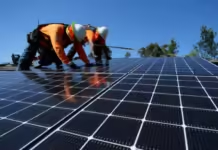Originally posted in S&P Global Platts on 10 December 2021
South Korea will close down 24 aging coal-fired power plants permanently by 2034 as part of efforts to phase out coal consumption for electricity generation by 2050 and boost the country’s clean hydrogen self-sufficiency ratio to 34% in 2030, and further to 60% in 2050, the government said Dec. 10.
The government unveiled the country’s first detailed “action plans” to achieve a carbon neutrality under which South Korea also plans to use carbon-free sources of ammonia and hydrogen as a key power generation fuel to reduce coal and LNG demand for electricity production.
The action plans, which were announced jointly by 10 related government agencies, such as the industry-energy ministry, the economy-finance ministry, the environmental ministry and the science ministry were focused on an early requirement of coal-fired power plants.
“A total of 24 aging coal-fired power plants will be fully retired by 2034 and operation of the other coal power plants will be restricted, which will lead to no coal-based electricity generation by 2050,” the joint statement said.
The country is currently running 53 coal-fired power plants as seven have been permanently closed down for the past two years as part of President Moon Jae-in’s push to reduce the country’s heavy reliance on coal in power generation and address worsening air pollution.
“The government plans to raise the portion of ammonia to 3.6% in 2030, or 22.1TWh, in 2030 compared with zero currently,” said an official at the Ministry of Trade, Industry and Energy.
In addition, South Korea will provide 27.9 million mt/year of “clean hydrogen” by 2050, green or blue hydrogen, including imports of 22.9 million mt/year of green hydrogen from overseas, the official said.
“Under the action plans, the combined portion of renewable and carbon-free sources will rise to 33.8% in the country’s power generation mix in 2030, compared with 6.6% in 2020, and will further jump to 93.6% in 2050,” the government statement said.
“As nuclear reactors will account for 6.1% in 2050, 99.7% of South Korea’s power generation will come carbon free,” it said.
The country will also secure 900 million mt/year of carbon storage space by 2030 to make sure there are no carbon emissions by 2050, according to the general strategy.
The government is also pushing to enact a “basic law on resources security” so as to secure stable supplies of hydrogen, ammonia and renewable sources in addition to oil and gas.
With the action plans in place, the shares of coal and LNG in power mix will reduced to 21.8% and 19.5% in 2030, respectively, from 35.6% and 26.4% in 2020, before being phased out in 2050.
“With the measures, carbon emissions by the industrial sector will be slashed to 226.6 million mt in 2030, and further to 51.1 million mt in 2050, down 80.4% from 260.5 million mt in 2018,” the joint statement said.
In an initial stage, the government and businesses will spend Won 90 trillion ($76.3 billion) over the next four years until 2025 in carbon reduction projects, the statement said.
In an effort to make local companies invest in carbon reduction, President Moon held a meeting with chief executives of some 40 companies, including Hyundai Motor, LG Display and SK Innovation in which he said the government will provide financial and regulatory supports, such as tax incentives, for their efforts to reduce carbon emissions.
Moon said the government will use its policy of carbon neutrality to increase the competitiveness of the manufacturing industry.
“The government will make bold investments on infrastructure for new energy solutions, such as hydrogen, renewable energy and electricity networks,” he told the CEOs.






